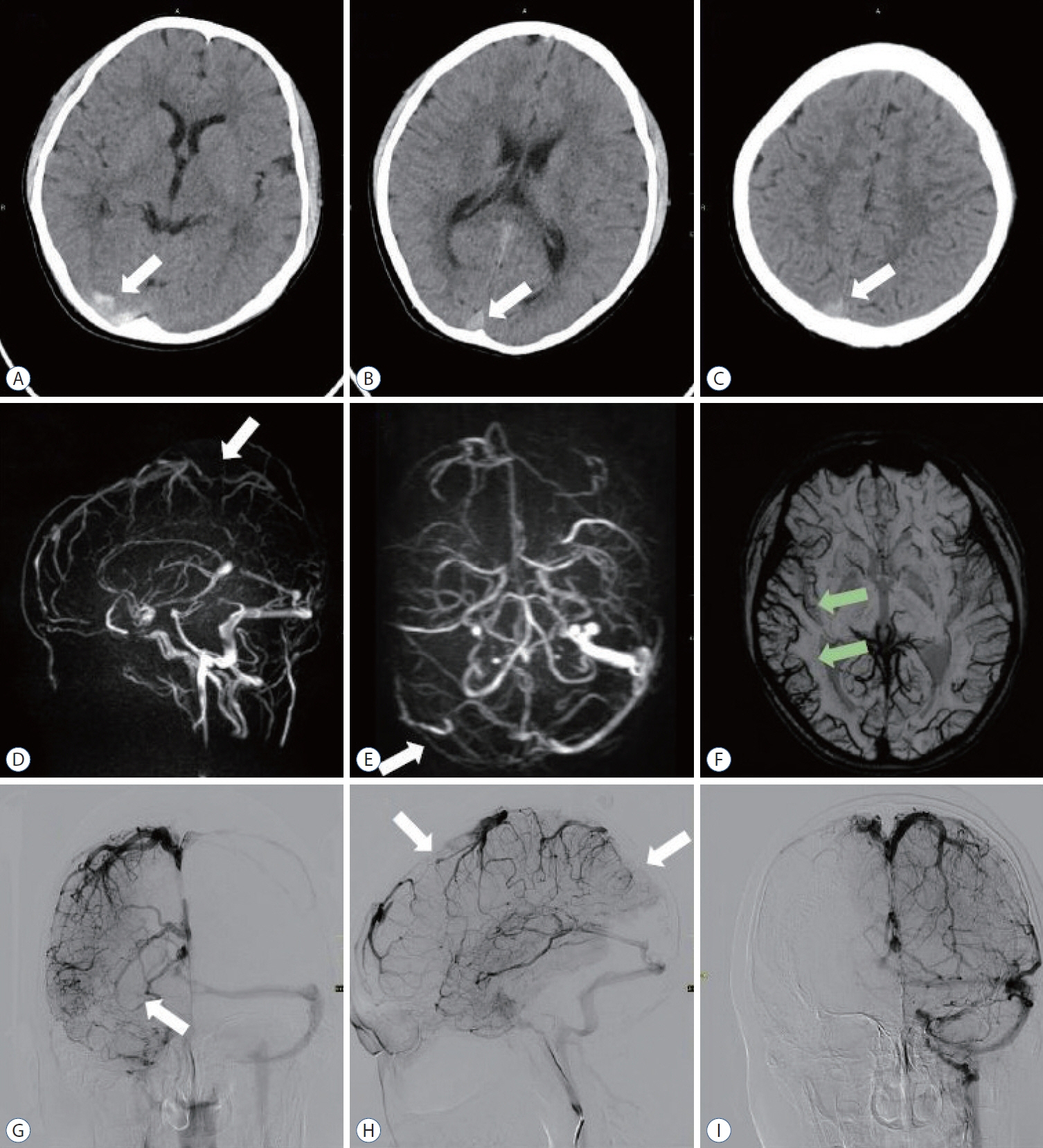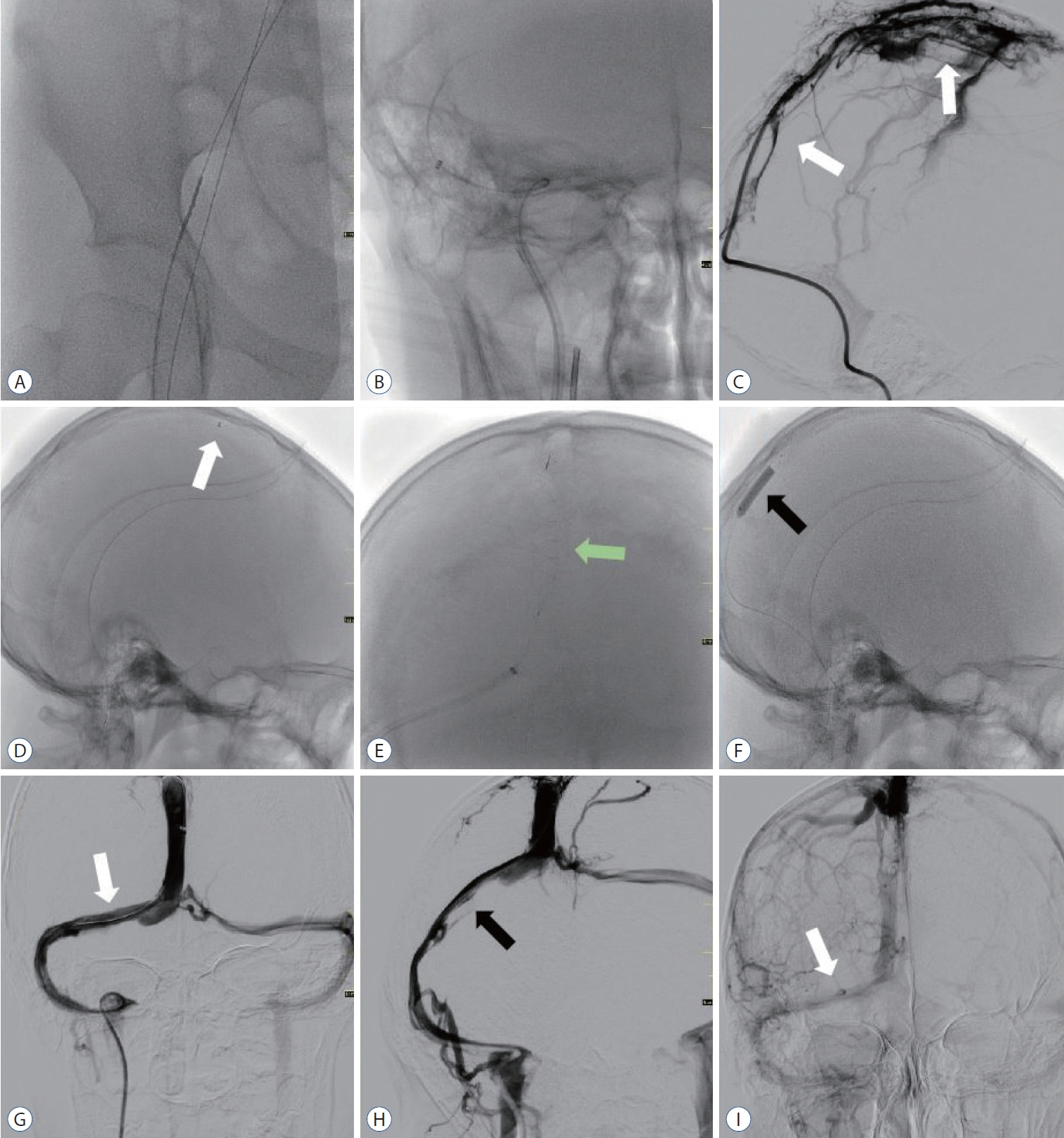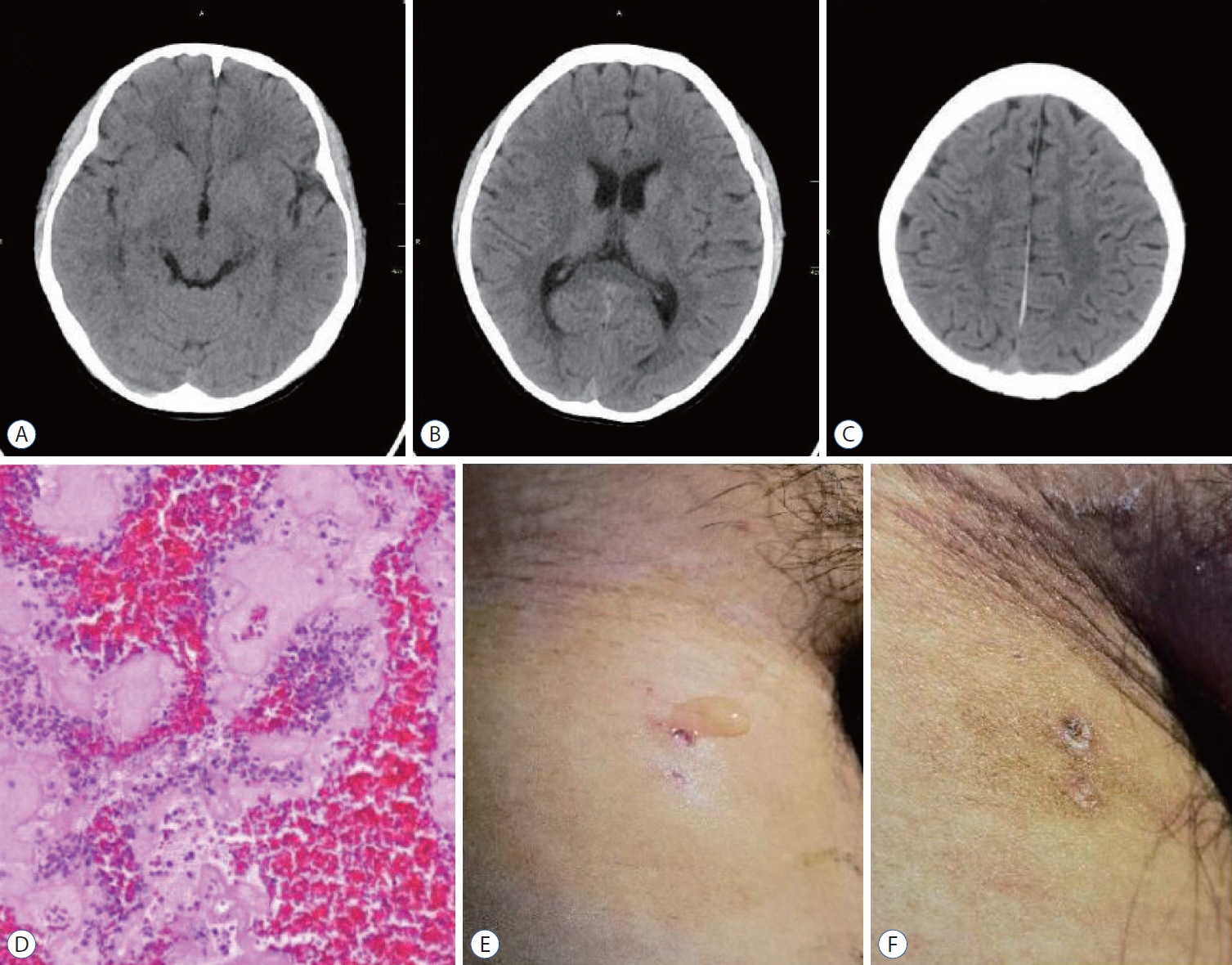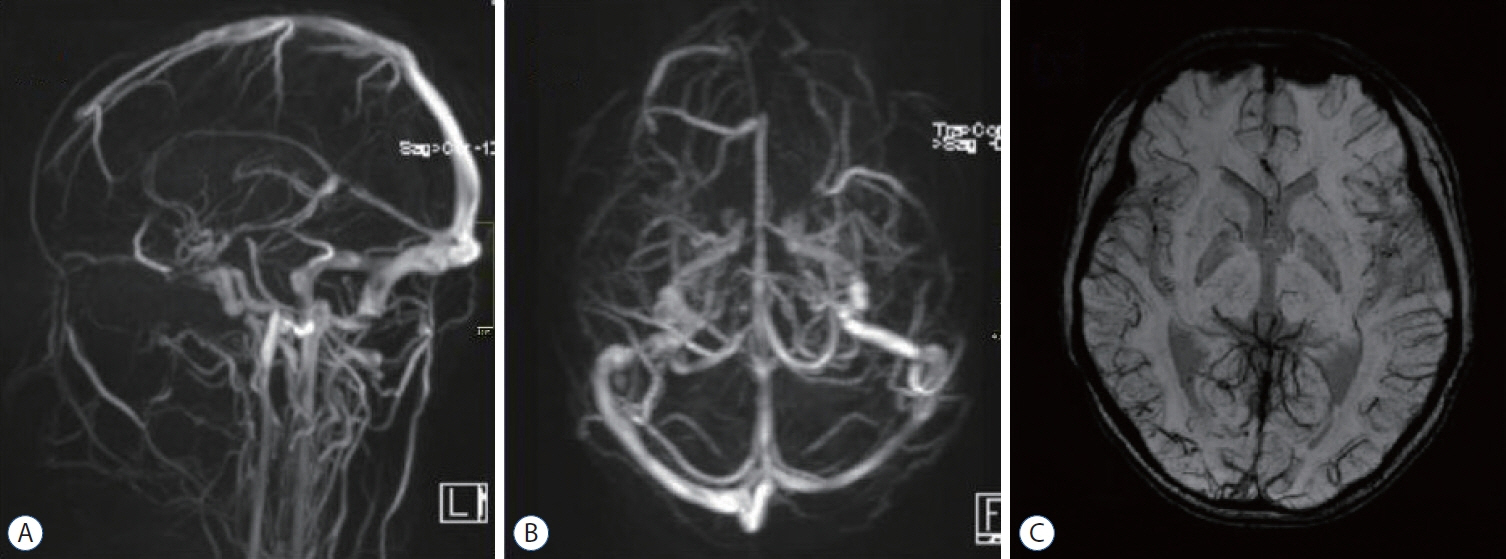J Korean Neurosurg Soc.
2023 Nov;66(6):735-742. 10.3340/jkns.2022.0254.
Mechanical Thrombectomy for Refractory Cerebral Venous Sinus Thrombosis in a Child with Nephrotic Syndrome : A Case Report
- Affiliations
-
- 1Department of Neurology, The Sixth People’s Hospital of Chengdu, Chengdu, China
- 2Department of Neurology, Affiliated Hospital of Southwest Medical University, Luzhou, China
- 3Department of Neurosurgery, Affiliated Hospital of Southwest Medical University, Luzhou, China
- 4Department of Neurology, The First Affiliated Hospital of Chengdu Medical College, Chengdu, China
- KMID: 2547467
- DOI: http://doi.org/10.3340/jkns.2022.0254
Abstract
- Nephrotic syndrome (NS) is associated with cerebral venous sinus thrombosis (CVST), which is a rare cerebrovascular disorder in children. Systemic anticoagulation with heparin is the standard therapy for CVST, and mechanical thrombectomy (MT) has been described as a salvage treatment for adult anticoagulant refractory CVST, However, it has never been reported in children. We describe a case of MT for refractory CVST in a child with NS. A 13-year-old boy with newly diagnosed NS presented to an emergency department with acute headache. A head computed tomography showed acute thrombus in the superior sagittal sinus, straight sinus and transverse sinus. The child was started on heparin therapy, but clinically deteriorated and became unresponsive. In view of the rapid deterioration of the condition after anticoagulation treatment, the patient received intravascular treatment. Several endovascular technologies, such as stent retriever and large bore suction catheter have been adopted. After endovascular treatment, the patient’s neurological condition was improved within 24 hours, and magnetic resonance venography of the head demonstrated that the CVST was reduced. The child recovered with normal neurological function at discharge. This case highlights the importance of considering MT for refractory CVST, and we suggest that MT may be considered for refractory CVST with NS in children.
Keyword
Figure
Reference
-
References
1. Behrouzi R, Punter M. Diagnosis and management of cerebral venous thrombosis. Clin Med (Lond). 18:75–79. 2018.
Article2. Capecchi M, Abbattista M, Martinelli I. Cerebral venous sinus thrombosis. J Thromb Haemost. 16:1918–1931. 2018.
Article3. Dandapat S, Samaniego EA, Szeder V, Siddiqui FM, Duckwiler GR, Kiddy U, et al. Safety and efficacy of the use of large bore intermediate suction catheters alone or in combination for the treatment of acute cerebral venous sinus thrombosis: a multicenter experience. Interv Neuroradiol. 26:26–32. 2020.
Article4. Ferriero DM, Fullerton HJ, Bernard TJ, Billinghurst L, Daniels SR, DeBaun MR, et al. Management of stroke in neonates and children: a scientific statement from the American Heart Association/American Stroke Association. Stroke. 50:e51–e96. 2019.
Article5. Feske SK. Ischemic stroke. Am J Med. 134:1457–1464. 2021.
Article6. Gadgil N, Aldave G, Whitehead WE, Dmytriw AA, Chen K, Orbach D, et al. Endovascular intervention for refractory pediatric cerebral venous sinus thrombosis. Pediatr Neurol. 121:45–50. 2021.
Article7. Gao X, Liu Y, He Q, Shen X. Cerebral venous sinus thrombosis in nephrotic syndrome. Kidney Int. 101:1303. 2022.
Article8. Liu S, Shan XG, Zhang XJ. The place of hydration using intravenous fluid in patients at risk of developing contrast-associated nephropathy. Br J Hosp Med (Lond). 81:1–7. 2020.
Article9. Mortimer AM, Bradley MD, O’Leary S, Renowden SA. Endovascular treatment of children with cerebral venous sinus thrombosis: a case series. Pediatr Neurol. 49:305–312. 2013.
Article10. Ropper AH, Klein JP. Cerebral venous thrombosis. N Engl J Med. 385:59–64. 2021.
Article11. Sébire G, Tabarki B, Saunders DE, Leroy I, Liesner R, Saint-Martin C, et al. Cerebral venous sinus thrombosis in children: risk factors, presentation, diagnosis and outcome. Brain. 128:477–489. 2005.
Article12. Siddiqui FM, Dandapat S, Banerjee C, Zuurbier SM, Johnson M, Stam J, et al. Mechanical thrombectomy in cerebral venous thrombosis: systematic review of 185 cases. Stroke. 46:1263–1268. 2015.
Article13. Stam J. Thrombosis of the cerebral veins and sinuses. N Engl J Med. 352:1791–1798. 2005.
Article14. Tavil B, Kara F, Topaloglu R, Aytac S, Unal S, Kuskonmaz B, et al. Case series of thromboembolic complications in childhood nephrotic syndrome: Hacettepe experience. Clin Exp Nephrol. 19:506–513. 2015.
Article15. Yun JH, Ko JH, Lee MJ. Early spontaneous recanalization of sigmoid sinus thrombosis following a closed head injury in a pediatric patient : a case report and review of literature. J Korean Neurosurg Soc. 58:150–154. 2015.
Article
- Full Text Links
- Actions
-
Cited
- CITED
-
- Close
- Share
- Similar articles
-
- Treatment of the Superior Sagittal Sinus Thrombosis with the Mechanical Thrombectomy Using Stent-Retriever Device
- A Case of Extensive Cerebral Venous Thrombosis in Childhood Nephrotic Syndrome
- A Case of Cerebral Infarction with Nephrotic Syndrome
- Cerebral sinovenous thrombosis associated with nephrotic syndrome
- A Childhood Case of Nephrotic Syndrome Complicated with Cerebral Venous Sinus Thrombosis Followed by Left Popliteal Artery Thrombosis





